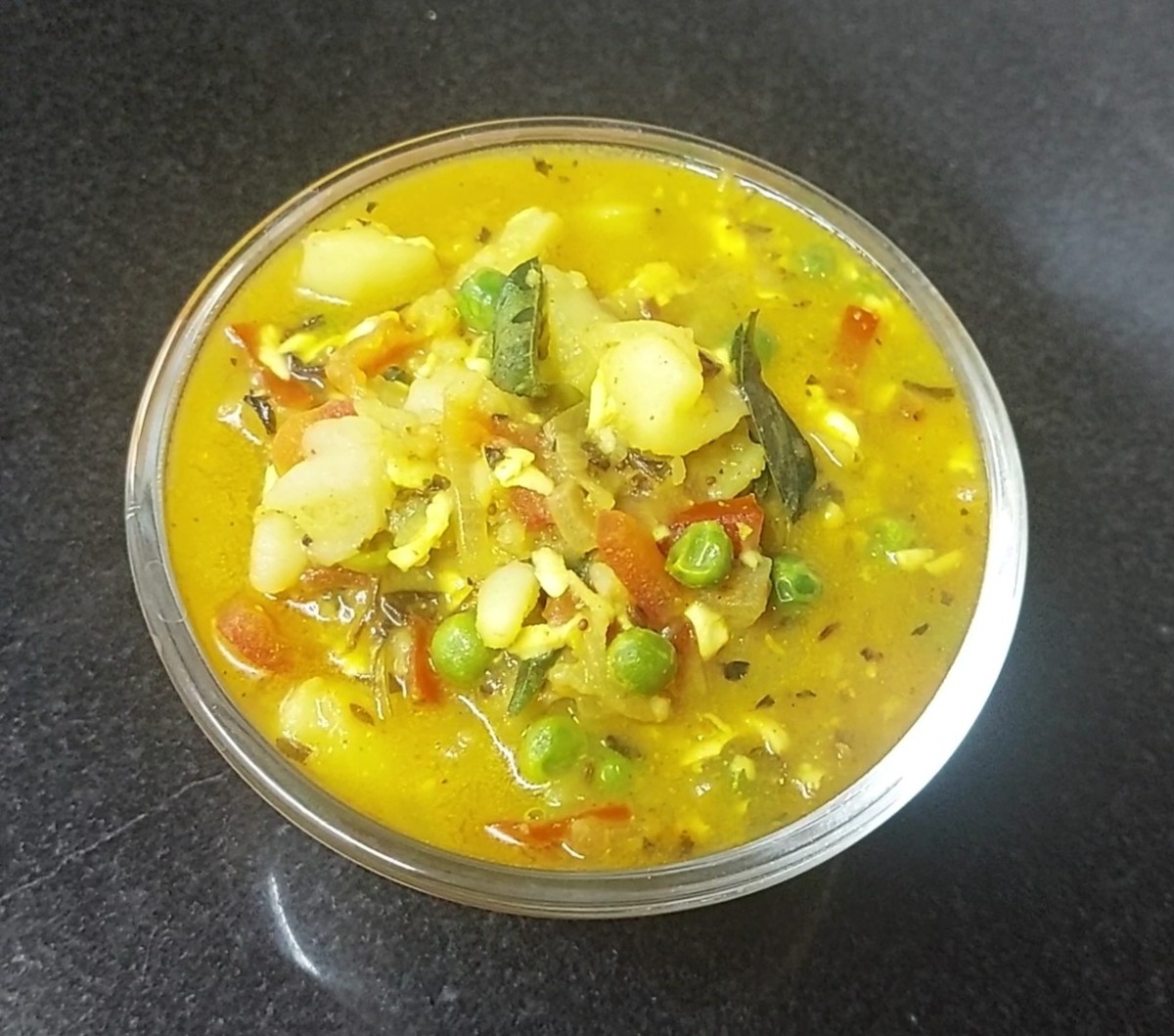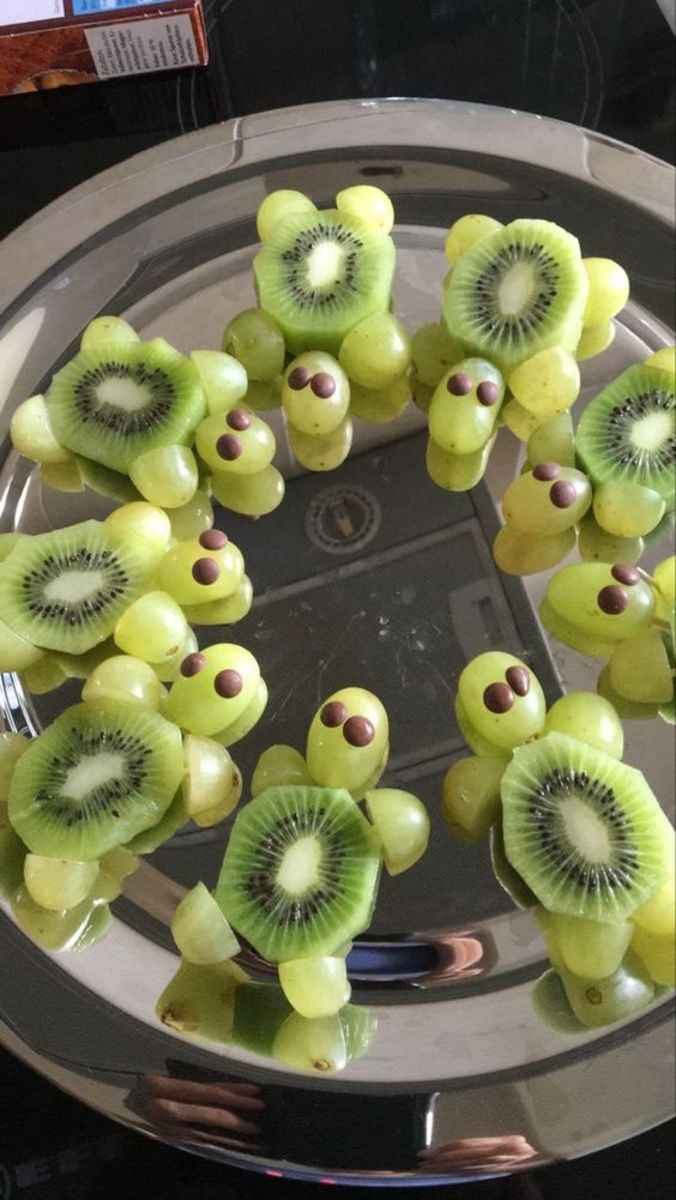Feeding Your Toddler
Feeding toddlers is often a challenge. They get pickier (sometimes seemingly by the day), they have a list of favorites (but even these may be refused), and vegetables are often hard to get them to eat. So how do you get your little eater to eat healthy? How do you know they are getting enough nutrition?
These answers are often hard to know, but there are guidelines and helpful tips that can have your child eating well and healthier.
A Variety
We all know that nutrition is supposed to be about a balanced meals. However, watching your toddler skip meals, pick at them, or choose to eat only a few items on their plate can make it hard to feel like you have accomplished the goal. It should be known that a toddler portion is about 1/4 the size of an adult portion. Which means they get all the nutrients that they need from a lot less food. Here is their "food pyramid" as well. This is a guideline, but it shouldn't be something you worry too much about.
- 6 servings of grain
- 3 servings of vegetables
- 2 servings of fruit
- 2 servings of milk or dairy
- 2 servings of meat or protein
While this may seem impossible (I could never get my son to eat three servings of vegetables a day and am lucky to get him to eat that many in a week), your child will eat a more balanced week then you imagine if you pay attention to what he or she is eating all throughout the week.
Reminder
Young, healthy children are amazing at regulating their own food needs. If they are growing right now and need more energy, they consume more food. If they aren't hungry they stop eating (as long as nothing overly tempting is offered). We are actually trained out of this by those around us!
Common Feeding Mistakes
Sometimes desperation leads us to doing things we shouldn't do. We are desperate to get our children nutrients and to keep them happy (no one likes hearing a toddler throw a temper tantrum). These things can lead us to making common mistakes. Here are some of the most common.
- Over Milking the Day- Milk is good for our kids and we usually feel pretty good if they drink a lot of it. However, if your child is drinking more then 16 ounces of milk a day it is likely that he or she is filling up on milk and not getting hungry enough for other things.
- Over Juicing the Day- Juice has some good properties, but it is also high in sugar and often fills a child up so that they aren't hungry at meal times.
- Sweets and Snacks- Most of us provide a variety of snacks throughout the day. Often these are things that our kids eat well. However, if we over do it then our kids won't be hungry at meal times. Plus they will usually choose items that aren't healthy for them over ones that are (cookies or an apple?).
- Forcing a Child To Eat- Whether you have a nightly battle or a once in awhile battle, food battles are bad. Forcing your child to eat can lead to food issues. It is also a bad idea to reward for eating certain foods (turning them into a punishment) or reward with certain foods (making it more likely that they will turn to them in the future for rewards and comfort).
- Serving Too Much Food- Remember that your toddler needs small portions. He or she will eat less then they did when they were younger because they aren't needing as much energy to grow as they did when they were smaller.
Making It Work
If you are like me, I can read through all of this, nod my head, and then wonder what to do now (it is actually what I did when I first started studying nutrition and feeding picky toddlers). Sure, sounds easy enough on paper, but practice isn't as easy! Chicken nuggets for dinner anyone? Well, making it happen is usually work, and it takes a conscious effort. However you can do it!
- Milk and Juice- Serve milk and or juice with your meals or just after your meals. Avoid it at other times to make sure that you aren't giving too much and filling your child up.
- Make sure your snacks are healthy and planned- Schedule your meal times and your snack times. This way your toddler has lots of opportunity for making good choices. Offer healthy snack options so that they are getting a good snack and that snacks are adding to the nutrition of the day.
- Avoid food battles all together- Don't fight with your kids about food. Don't even mention food at the table (ignore complaints and bite your tongue). Don't bribe them to eat good foods. Also vary dessert and never make it a reward.
- Serve small potions and give out seconds when requested- Start small. If your kid wants more he or she can have more, but don't make dinner feel overwhelming. Also provide a little of everything offered.
- Serve at least one thing that they like and offer a little of everything else- This can give them something to eat, while providing lots of options. Don't worry if they don't eat anything else on their plate and give them more of what they like if it is asked for. Just make sure you are offering the veggies and such.
- Don't worry if you child doesn't eat well. Watch what they eat on a weekly basis rather then a daily basis. Most will eat poorly one to three days a week and better on the other days.
- Introduce new foods one at a time- Talk about them, how they taste, and let your toddler try it if he or she wants. If they don't, no big deal, but they may surprise you. Even if they didn't eat it the first time continue to offer it to them, they may get bold and try it some day. It can also be fun to help your older toddler pick out new foods from the grocery store or to help make dinner with the new food.
The biggest thing is to offer a wide variety of healthy foods, limit how much junk food is offered, and not feel bad if your toddler doesn't seem to be getting enough food. As long as he or she is growing, healthy, and eating something each day it is okay. If you are really worried then talk to your pediatrician.
Junk Food Guide
There are a number of tricks that can help your toddler limit junk food. Often this requires good examples. After all, if you are having cookies for breakfast, it isn't fair to tell you toddler "no" and he or she will let you know that that's how they feel about it. Follow a few good tips on keeping junk food consumption under control and you are well on your way to a good diet.
- Don't buy a lot of options. If you kids (any age) go to the pantry and only find one or two options then they are less likely to choose junk over other foods.
- Offer small portions of junk food. Don't give out a lot of chocolate, chips, or soda. Instead give out a small amount at a time and limit how much they eat.
- Choose your junk options with care. Sure pretzels still aren't great nutrition, but they are a better option then chips and are still yummy. Choose crackers, pretzels, popcorn, and even tortilla chips over other salty options. Get hard candy that can be eaten a piece at a time, or small individual chocolates over larger pieces. This way you can offer small amounts of candy. Limit cakes, cookies, and ice cream as well.
- Don't ban a food. This can make it a fight and can also make it something that your kids binge on whenever possible. Instead limit the food(s) rather then getting rid of them altogether. Cake isn't an enemy, but you shouldn't eat more then once piece and only once in awhile rather then all the time.
- Wean kids used to having a lot of junk foods. Slowly limit choices and replace junk food with healthier options.
Vitamins
While a multi-vitamin will never replace a balanced diet, it can help you make sure that your child is getting vital nutrients even when he or she refuses whole food groups. It isn't a bad idea to have a once a day, age appropriate vitamin in a method that is easy for them to take (chew ables, gummies). Just to add a boost to what you are trying to do!
Boosting Nutrition
Sometimes we have to sneak in a little extra nutrition into our kids' diets. This is especially true if they won't touch the vegetables. Here are a few tips for boosting nutrition.
- Puree vegetables to put into their favorite foods. You can do this with a lot of different foods or stick to those easier to cook. Such as adding pureed veggies to spaghetti sauce.
- Make it whole grain. If they like a food, try the whole grain option and you may find that your child will enjoy whole grain just as easily.
- Cook vegetables with other foods. Some of the goodness rubs off and if your kid eats either part then you are on your way.
- If your kid won't eat meat (mine doesn't touch it though he loves talking about it) then use beans, eggs, and peanut butter as other options. Peanut butter can be put on top of vegetables, fruits, crackers, toast, and waffles. It can also be doled out on a spoon for a fun and different treat. If your kid is above average on size then use a reduced fat peanut butter because while it is very healthy for us it does have a lot of fat.
- Make your juice a vegetable juice or a fruit and vegetable juice. This way you are sneaking in a few veggies there as well.
- If your kid has a few items that he likes in categories he is picky about then offer them more often with other options right by the side. For example, if your child will eat cucumbers but not very many other vegetables, offer cucumbers a lot right next to his or her other vegetables.
No one ever said it was going to be easy. However, try to worry less, add as many options as possible, and let your kid be a picky eater for now. Don't fight over food and remember that young kids are great at eating what they need and not too much or too little (even if it seems that way). Offer a variety and you are on your way to a healthy eater!




